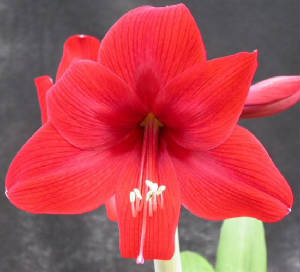|
|
 |
|
Gardening Blog
|
 |
|
|
Monday, September 27, 2010
October Landscape Chores
If you are new to gardening in Florida, October is a lot
like April in the north, minus the spring rains. Sometimes our October rains are frog chokers, but October
can be drier too. We do start to get some cooler breezes and that makes working outside in the garden more
pleasant.
October is the last month to fertilize lawns with
a complete fertilizer. Use a slow release fertilizer with slow release Nitrogen (like 15 – 0 – 15) at the rate of one pound of Nitrogen per 1000 square feet of grass.
A great publication for understanding how to determine how much fertilizer to use is Figuring out Fertilizer for
the Home Lawn on the Internet at: http://edis.ifas.ufl.edu/ep221. slow release Nitrogen (like 15 – 0 – 15) at the rate of one pound of Nitrogen per 1000 square feet of grass.
A great publication for understanding how to determine how much fertilizer to use is Figuring out Fertilizer for
the Home Lawn on the Internet at: http://edis.ifas.ufl.edu/ep221.
Now is also the time to control winter weeds in the lawn.
Watch for night time temperatures that are 55 – 60 degrees for several nights in a row, and then apply a pre-emergent
herbicide. Be sure that the herbicide you choose is labeled for your type of grass. For
more information consult Weed Management in Home Lawns on the Internet at: http://edis.ifas.ufl.edu/ep141.
Because October is like spring in other parts of the country, we can plant some of
the same spring annual flowers now. Impatiens, geraniums, petunias, pansies and snapdragons can be planted
as soon as the plants are available. Seeds of calendula and nasturtium can also be planted directly in
the ground. Prepare the bed by spading in compost or other organic matter along with some slow release
fertilizer just before planting. Mulch the bed well after planting to conserve moisture and keep down weeds.
Remember to keep the mulch two to three inches away from the base of each plant.
 The fall and winter months are good for growing herbs. Many herbs that succumb to our hot steamy summers will thrive during
the cooler months. If you don’t have a lot of space, herbs grow well in containers. More information on growing herbs in Florida is available on the
Internet: Herbs in the Florida Garden http://edis.ifas.ufl.edu/vh020 The fall and winter months are good for growing herbs. Many herbs that succumb to our hot steamy summers will thrive during
the cooler months. If you don’t have a lot of space, herbs grow well in containers. More information on growing herbs in Florida is available on the
Internet: Herbs in the Florida Garden http://edis.ifas.ufl.edu/vh020
Want to add some bulbs to your landscape. Amaryllis
bulbs (Hippeastrum spp.) could be called the Florida tulip. They make a striking bloom show in the spring when planted in groups of 10 or more in landscape
beds. Remember, when planting amaryllis bulbs, the collar and the very top of the bulb should be
above the soil line. Keep the mulch away from the top of the bulb. You can also plant Crinum or Swamp
Lily bulbs (Crinum americanum) now for spring and summer bloom.
Well-suited to hot, dry, locations, Crinum Lilies grow from what are among the largest true bulbs, some weighing over
40-pounds. Crinums will recover quickly from killing frosts in our area. Deer have not eaten the plants
of Crinum bulbs in my garden, but they occasionally eat the foliage of the Amaryllis. Florida tulip. They make a striking bloom show in the spring when planted in groups of 10 or more in landscape
beds. Remember, when planting amaryllis bulbs, the collar and the very top of the bulb should be
above the soil line. Keep the mulch away from the top of the bulb. You can also plant Crinum or Swamp
Lily bulbs (Crinum americanum) now for spring and summer bloom.
Well-suited to hot, dry, locations, Crinum Lilies grow from what are among the largest true bulbs, some weighing over
40-pounds. Crinums will recover quickly from killing frosts in our area. Deer have not eaten the plants
of Crinum bulbs in my garden, but they occasionally eat the foliage of the Amaryllis.
Fertilize citrus trees this month using 8-8-8 fertilizer. Apply fertilizer
to the entire rooting area which usually extends well beyond the drip line of the tree. The amount of fertilizer
varies according to the age of the tree. Fertilizer should be applied three times a year in February, June and October.
For additional information see Your Dooryard Citrus Guide at: http://edis.ifas.ufl.edu/topic_hs_your_florida_dooryard_citrus_guide
12:43 pm edt
|
|
To subscribe to this blog - click on XML icon.
|
 |
|
|
|
 |
|
|
Pampered Gardeners LLC * Oldsmar, FL * USA * Phone: 727 483-3783 * pam@pamperedgardeners.com
|
|
|
 |

